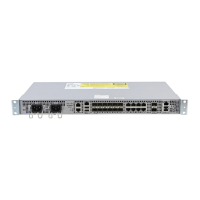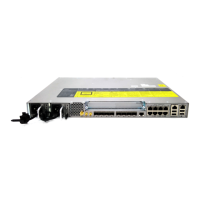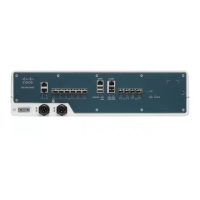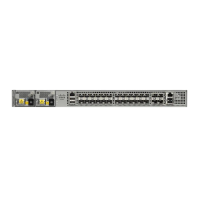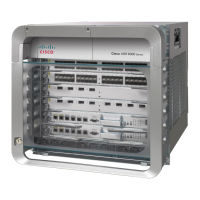2-15
Cisco ASR 920 Series Aggregation Services Router Hardware Installation Guide
OL-32751-01
Chapter 2 Preparing for Installation
Site Planning
Site Cabling Guidelines
This section contains guidelines for wiring and cabling at your site. When preparing your site for
network connections to the Cisco ASR 920 Series Router, consider the type of cable required for each
component, and the cable limitations. Consider the distance limitations for signaling, electromagnetic
interference (EMI), and connector compatibility. Possible cable types are fiber, thick or thin coaxial, foil
twisted-pair, or unshielded twisted-pair cabling.
Also consider any additional interface equipment you need, such as transceivers, hubs, switches,
modems, channel service units (CSU), or data service units (DSU).
Before you install the Cisco ASR 920 Series Router, have all the additional external equipment and
cables on hand. For information about ordering, contact a Cisco customer service representative.
The extent of your network and the distances between the network interface connections depend, in part,
on the following factors:
• Signal type
• Signal speed
• Transmission medium
The distance and rate limits referenced in the following sections are the IEEE-recommended maximum
speeds and distances for signaling purposes. Use this information as a guideline when planning your
network connections prior to installing the Cisco ASR 920 Series Router.
If wires exceed the recommended distances, or if wires pass between buildings, give special
consideration to the effect of a lightning strike in your vicinity. The electromagnetic pulse caused by
lightning or other high-energy phenomena can easily couple enough energy into unshielded conductors
to destroy electronic devices. If you have had problems of this sort in the past, you may want to consult
experts in electrical surge suppression and shielding.
Asynchronous Terminal Connections
The Cisco ASR 920 Series Router provides a console port to connect a terminal or computer for local
console access. The port has an RJ-45 connector and supports RS-232 asynchronous data with distance
recommendations specified in the IEEE RS-232 standard.
Interference Considerations
When wires are run for any significant distance, there is a risk that stray signals will be induced on the
wires as interference. If interference signals are strong, they may cause data errors or damage to the
equipment.
The following sections describe the sources of interference and how to minimize their effects on the
Cisco ASR 920 Series Router system.
Electromagnetic Interference
All the equipment powered by AC current can propagate electrical energy that can cause EMI and
possibly affect the operation of other equipment. The typical sources of EMI are equipment power cords
and power service cables from electric utility companies.
Strong EMI can destroy the signal drivers and receivers in the Cisco ASR 920 Series Router and even
create an electrical hazard by causing power surges through the power lines into installed equipment.
These problems are rare, but could be catastrophic.

